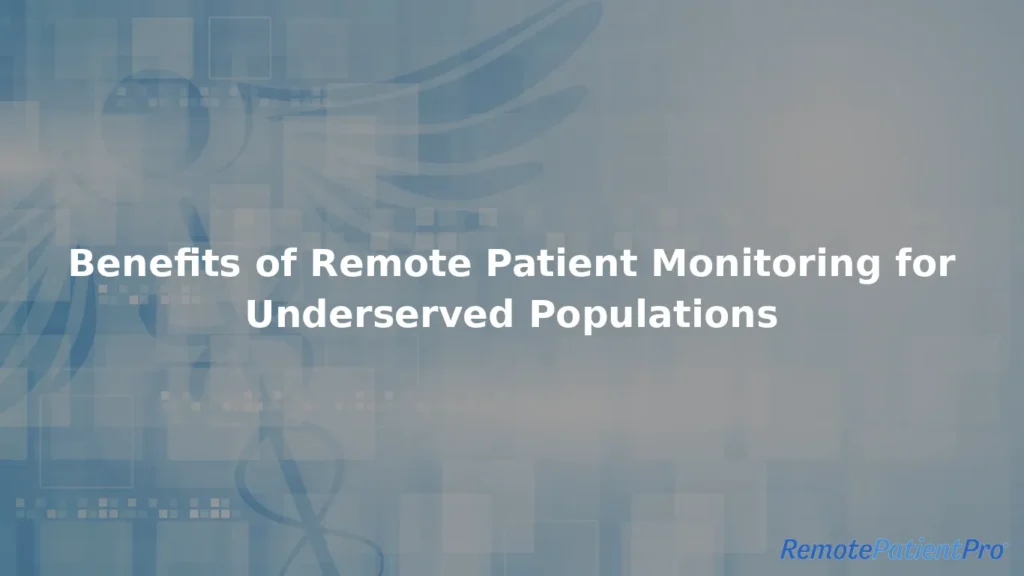Benefits of Remote Patient Monitoring for Underserved Populations
Millions of people in underserved communities struggle to access quality health care, making it difficult to manage their chronic conditions effectively. That’s why many Federally Qualified Health Centers are interested in the benefits of remote patient monitoring (RPM) for these populations, as one of its biggest advantages is improved chronic disease management. FQHCs and community clinics already play vital roles in addressing these care disparities, but challenges such as transportation barriers, financial constraints, and provider shortages remain significant obstacles.
The Role of Remote Patient Monitoring (RPM)
Remote patient monitoring is emerging as a powerful solution to bridge these medical gaps. By enabling real-time health tracking and continuous communication between patients and providers, RPM ensures that individuals receive proactive, high-quality care — no matter where they live.
Key Benefits of RPM for Underserved Populations
Improved Access to Care
RPM eliminates the need for frequent in-person visits by allowing patients to share their health data remotely. This allows them to receive timely medical attention without having to worry about travel constraints.
Better Chronic Disease Management
For patients with conditions like diabetes, hypertension, and heart disease, RPM’s continuous monitoring encourages early interventions that reduce the risks for further health complications.
Reduced Emergency Room Visits & Hospitalizations
According to the National Institutes of Health (NIH), RPM and telemedicine have been shown to reduce hospital utilization. By detecting health issues before they escalate, RPM prevents costly readmissions and unnecessary ER visits, easing the financial burden on both patients and healthcare facilities.
Enhanced Patient Engagement & Education
With user-friendly devices and mobile-friendly dashboards, RPM encourages patients to take more active roles in their health, leading to better medication adherence and lifestyle management.
Support for Overburdened Healthcare Providers
FQHCs and clinics serving underserved populations often face staff shortages and high patient volumes. RPM helps providers prioritize care for high-risk patients while automating routine monitoring tasks.
How RPP’s RPM Platform Supports Underserved Communities
Our remote patient monitoring (RPM) platform is designed to help healthcare providers deliver better care with fewer resources.
- Real-Time Health Tracking – Monitor key vitals, including blood pressure, glucose levels, and oxygen saturation.
- Seamless Integration With Existing Systems – Sync data with EHRs and telehealth platforms for a smooth workflow.
- Custom Alerts for High-Risk Patients – Identify early warning signs, allowing providers to intervene before conditions worsen.
- Affordable & Scalable Solutions – Save revenue whether you’re an FQHC or rural clinic.
Transform Patient Care With RPP’s RPM Solution
By adopting RPM technology, healthcare organizations can enhance health outcomes, patient satisfaction, and operational efficiency — especially for underserved populations.
Want to see how RPM can help your clinic? Schedule a demo and discover the impact of proactive remote care.

